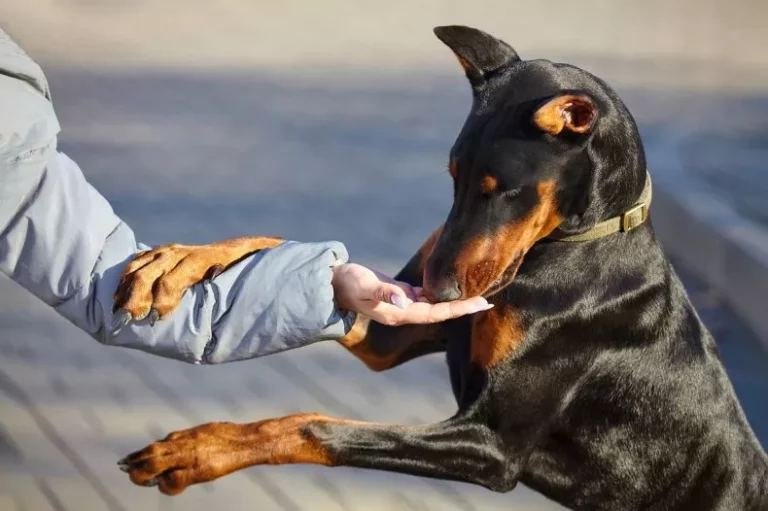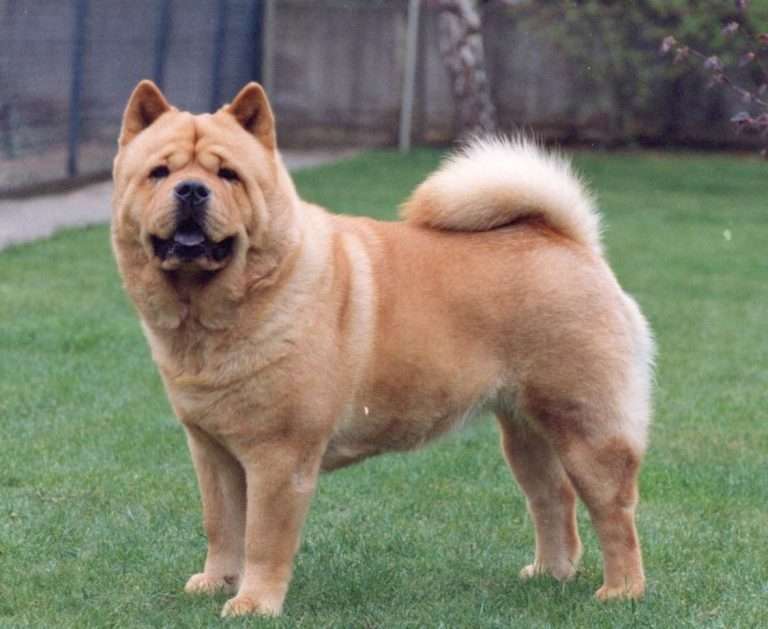What is an Umbilical Hernia in Dogs? Causes, Care, and Prevention
An umbilical hernia in dogs is a medical condition where a protrusion or bulge develops near the belly button (navel) area, also known as the umbilicus.
In this blog post, we will deeply understand umbilical Hernia in dogs, the causes of this disease, and how to prevent this disease also we share some home remedies for the care of dogs.
What is an umbilical hernia in dogs?
When examining a dog at birth for birth defects, an umbilical hernia can be found. It looks like a bloat instead of a normal belly button. A small opening in the abdominal wall through which part of the membrane can come out is called a hernial ring.
The part of the membrane where the internal organs of the puppy, located near the hole, can get, is called the hernial membrane. The protruding abdominal membrane is called the hernial sac.
The hernia itself consists of a sac-like protrusion of tissue, often containing fat or abdominal organs, that pushes through the weakened area around the belly button. This can create a visible lump or swelling that is usually soft to the touch. While umbilical hernias are relatively common in puppies, they can also affect adult dogs.
Features of umbilical hernia in dogs?
When a puppy is born, ideally, the navel ring should contract. However, it happens that the ring is either irregular in shape or too large. As a result, the natural closure of the abdominal wall does not occur, as a result of which an umbilical hernia develops in a dog.

An umbilical hernia can be true, that is, consisting of an umbilical ring and a sac, and false – without a hernial sac.
An umbilical hernia is of several types:
- Reducible
- Irreducible
- Hurt
Reducible: If it is reducible, then its contents are easy to shove back.
Irreducible: If adhesions form between the contents of the hernial sac and the walls, then it is called irreducible. Umbilical hernias in dogs can vary in size and severity. Small hernias might not cause any discomfort or health issues and could even close up on their own as the puppy grows.
Hurt: In the first two cases, an umbilical hernia does not cause any inconvenience or pain to the puppy, there are no signs of inflammation or swelling. The skin around is normal, without redness.
larger hernias can pose more significant concerns. They might lead to discomfort, pain, or complications if a piece of the intestine becomes trapped within the hernia, which could cut off blood supply and cause tissue damage.
The most dangerous type is the strangulated umbilical hernia. In this case, the content of the bag is squeezed by the hernial opening, as a result of which infringement occurs. You will need immediate treatment.
What causes umbilical hernia in puppies
There are two main causes of umbilical hernia in dogs:
- Congenital
- Acquired
Congenital umbilical hernia/ Hereditary
Due to hereditary predisposition, the puppy may have weakness in the tissues of the abdominal wall. The genetic factor affects the formation of defects in the umbilical ring in a puppy in the womb. The hernial opening is stretched due to abnormal contractions of the umbilical vein and artery that forms the umbilical-hepatic and umbilical-vesical ligaments. During childbirth, the umbilical ring enlarges, thereby causing an umbilical hernia.

The hereditary disposition is easy to recognize by observing the communication between the mother and puppies. If a bitch drags her babies by the umbilical cord, then this habit has been inherited by her at the genetic level.
If the fetus has a genetic predisposition to the appearance of an umbilical hernia, accordingly, no matter how carefully the birth goes, it will still appear.
Acquired umbilical hernia
The disease can occur during childbirth if the mother or obstetrician pulls hard on the umbilical cord. Accordingly, the cause of the occurrence will be trauma.
If the bitch bites the umbilical cord incorrectly or the person taking delivery cuts it incorrectly, then the umbilical cord begins to stretch, which causes the umbilical ring to expand.
With an increase in pressure inside the abdomen due to constipation, diarrhea, strong gas, or vomiting, a hernia may appear.
Symptoms of umbilical hernia in dogs
The main symptom of an umbilical hernia is a slight swelling in the umbilical region. When probing, it is soft to the touch and does not cause pain to the puppy.
If a puppy has a strangulated hernia, then the symptoms will be:
- Elevated temperature
- Increase in hernia volume
- Edema
- Redness
- Inflammation
- Swelling
- Vomiting and Changes in Appetite
The puppy becomes lethargic, stops eating, and defecates, he constantly vomits. He is standing in a forced position due to acute abdominal pain. In this case, the animal needs urgent surgery. If you do not take him to the doctor in time, the puppy will die.

Umbilical hernia in dogs Treatment
The veterinarian, by probing the hernia, can determine not only its size but also the contents of the hernial sac. Having correctly diagnosed, the doctor, accordingly, will be able to determine the method of treatment.
If the umbilical hernia in dogs is small and reducible to the touch, then a conservative method of treatment can be dispensed with. To do this, it is necessary to do a daily massage of the hernial ring using ointments prescribed by a veterinarian. An injection of rubbing alcohol into the abdominal muscles around the hernial ring will also help a lot.

After it was possible to set the contents of the hernial sac, it was necessary to shave the place of the disease, thereby ridding it of wool. Then wipe with alcohol or iodine, press down with something flat, and seal with a medical plaster.
In all other cases, surgery will be required. Especially with a strangulated umbilical hernia.
Do not worry – the operation is simple, quick, and easily tolerated by the dog. Moreover, the animal is anesthetized or given general anesthesia.
After the operation, the puppy will be stitched, which will need to be removed after ten days. To do this, you will have to contact the veterinarian again.
Is the Umbilical hernia dangerous?
Depending on the type of umbilical hernia in dogs, you can determine whether or not to worry.
If a small umbilical hernia decreases in a recently born puppy when palpated, then it may soon disappear on its own. You will need to use a coin and a Band-Aid, and no problem.
A small hernia that does not contain adipose tissue and does not change size almost never causes harm and complications. In this case, nothing will fall out through a small hole from the inside. If you don’t want your puppy to show disease, you can opt for cosmetic surgery.

If there is a risk that internal organs may fall out through the hernial opening, then there is a possibility for infringement. This type must be operated on immediately, otherwise, the disease threatens the life of the dog.
If an umbilical hernia appears in a puppy due to a genetic predisposition, other hereditary diseases can also be expected.
If the hernia is not healed in time, then big problems are possible in the future. For example, an umbilical hernia can prevent a bitch from bearing offspring. During pregnancy, there is a risk of puppies falling into the hernia sack, which can lead not only to the loss of the entire litter but also the uterus.
Necessary Prevention
In order to prevent the appearance of an umbilical hernia in dogs, it is worth taking preventive actions in advance.
Remember – it is impossible for newly born puppies to cut the umbilical cord too close to the stomach – a few centimeters must be left. Ideally, two to four is enough.
Do not allow babies to get up too early on their limbs, especially jump. Otherwise, displacement of internal organs may occur.
You can not take a puppy by the front or hind limbs, you can only lift it under the stomach. Especially if there are small children in the house – watch them, otherwise, they will start dragging the puppies at random, causing them irreparable harm.
If an umbilical hernia has nevertheless formed, it is worth showing the puppy to the veterinarian as soon as possible. After a thorough examination, the doctor will advise what is best to do in your case.
Should I buy a puppy with an umbilical hernia
Before purchasing a puppy with an umbilical hernia, consider its severity, potential health risks, financial commitment for treatment, breeder’s reputation, and long-term care requirements. Consult a veterinarian for guidance to make an informed decision based on the puppy’s well-being and your ability to provide necessary care.
Small Umbilical hernia in puppies are not a big deal. It can be resolved with simple home remedies and with quick surgery, If hernia is large then you have to think about it before making any decision. You can cosult with your vet that Should I buy a puppy with an umbilical hernia.
8 week old puppy with umbilical hernia
At 8 weeks, puppies are still in their early stages of development. Small umbilical hernias might close on their own as the puppy grows. Monitoring the hernia’s size and any changes is important.
Schedule a vet appointment to assess the hernia’s severity and potential risks. The vet can determine if the hernia needs medical intervention or if it’s likely to resolve naturally.
Depending on the size and health implications, your vet might recommend surgical correction.
Evaluate the puppy’s overall health. If the hernia is causing discomfort, affecting appetite, or leading to other issues, intervention might be necessary.
Understand that even after treatment, the puppy might have a slightly weakened abdominal area. Discuss any long-term care considerations with your vet. An 8 week old puppy with umbilical hernia warrants a veterinary assessment.
Further Informations about Umbilical Hernia in Dogs
Umbilical Hernia in Dogs is a vast topic we try to cover the whole topic. These questions and there answers will Quench your thirst.
Are umbilical hernias genetic in dogs?
Yes, there is a genetic component to the occurrence of umbilical hernias in dogs. While not all cases of umbilical hernias are solely caused by genetics, certain breeds are more predisposed to developing this condition due to inherited factors.
Can you breed a dog with an umbilical hernia
Breeding a dog with an umbilical hernia requires a comprehensive understanding of the condition’s impact on the dog’s health and its potential transmission to the offspring. Responsible breeding practices prioritize the health and welfare of both the parent dogs and the puppies.
Consultation with a veterinarian and adherence to ethical breeding principles are essential when making such decisions.
Male umbilical hernia
A male umbilical hernia is a medical condition that affects the abdominal area near the belly button in male dogs. Just like in females, male dogs can also develop umbilical hernias due to a weakness or incomplete closure of the abdominal muscles around the navel area.
Umbilical hernia in puppies surgery cost
The cost of umbilical hernia surgery for puppies can vary based on several factors. It’s important to keep in mind that prices can differ significantly depending on your location, the veterinary clinic, the size of the hernia, the puppy’s age and health condition, and other associated expenses.
You have to expect 150-400 $ for dog’s umbilical hernia.


